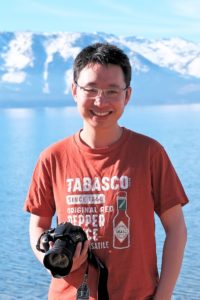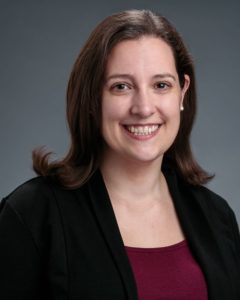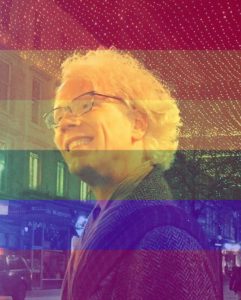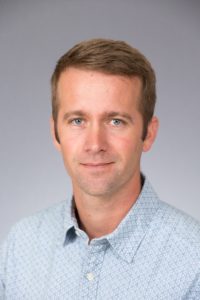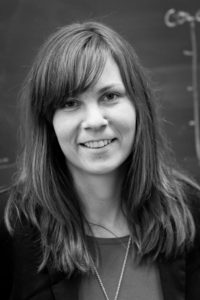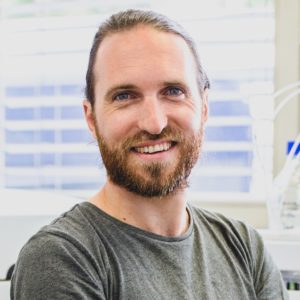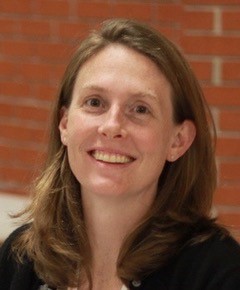 Greg LeFevre is an assistant professor of environmental engineering and science in the Department of Civil & Environmental Engineering and IIHR—Hydroscience & Engineering at the University of Iowa where he started in 2016. He did his BS at Michigan Tech, MS and PhD at University of Minnesota, and Postdoc at Stanford University all in environmental engineering. The LeFevreLab focuses on elucidating biotransformation products and pathways of emerging organic contaminants with the goal of informing improved design of ‘engineered-natural’ treatment systems for non-point pollutants, like urban stormwater and agricultural drainage, and transform wastes into resources, protecting people and ecosystems. Greg has received multiple sources of recognition for his work, including the National Science Foundation CAREER Award, the University of Iowa Early Career Scholar of the Year award, the American Chemical Society Editor’s Choice award and ACS Best Paper award, the Royal Society of Chemistry Environmental Sciences ‘Best Paper’ and multiple ‘HOT’ articles, National Academy of Engineering Frontiers of Engineering fellow, the AEESP Best Dissertation, amongst others.
Greg LeFevre is an assistant professor of environmental engineering and science in the Department of Civil & Environmental Engineering and IIHR—Hydroscience & Engineering at the University of Iowa where he started in 2016. He did his BS at Michigan Tech, MS and PhD at University of Minnesota, and Postdoc at Stanford University all in environmental engineering. The LeFevreLab focuses on elucidating biotransformation products and pathways of emerging organic contaminants with the goal of informing improved design of ‘engineered-natural’ treatment systems for non-point pollutants, like urban stormwater and agricultural drainage, and transform wastes into resources, protecting people and ecosystems. Greg has received multiple sources of recognition for his work, including the National Science Foundation CAREER Award, the University of Iowa Early Career Scholar of the Year award, the American Chemical Society Editor’s Choice award and ACS Best Paper award, the Royal Society of Chemistry Environmental Sciences ‘Best Paper’ and multiple ‘HOT’ articles, National Academy of Engineering Frontiers of Engineering fellow, the AEESP Best Dissertation, amongst others.
Read Gregory LeFevre’s Emerging Investigator Series article “municipal wastewater as a year-round point source of neonicotinoid insecticides that persist in an effluent-dominated stream” and read more about him in the interview below:
Your recent Emerging Investigator Series paper focuses on Municipal Wastewater as a Year-Round Point Source of Neonicotinoid Insecticides that Persist in an Effluent-Dominated Stream. How has your research evolved from your first article to this most recent article?
In some ways, my work has changed greatly through time, and in others it is very consistent. I did my PhD at the University of Minnesota focused on the fate and biotransformation of organic contaminants from stormwater in bioretention cells, and my postdoc was at Stanford focused on emerging contaminants in stormwater as well as plant metabolism of emerging contaminants during water recycling. Since starting at University of Iowa as a faculty member, we’ve been continuing in these areas and are also very interested in the fate and transformation of so-called ‘target-specific’ pesticides like the neonicotinoids. These compounds are so interesting and important because, although the parent compounds are explicitly designed to be less toxic to many non-target organisms, only very slight alterations to the chemical structure can dramatically alter the toxicity, reactivity, and fate of the transformation products.
What aspect of your work are you most excited about at the moment?
I am really interested in how complex chemical exposure mixtures occur and change in the environment and could lead to unanticipated effects to biota. Complex mixtures are important because of the potential for interactive effects on organisms (e.g., drug-drug interactions); when mixtures change in space and time, so can the risk profile. New collaborative work that we’ve been doing at the field study site featured in this paper has been probing some of the spatiotemporal drivers of complex mixture evolution, as well risk patterns. Mixtures are how chemicals occur in the real environment.
In your opinion, what are the most important questions to be asked/answered in this field of research?
I believe that we are standing at the verge of multiple big-data “omics” revolutions, with a huge opportunity to converge high res mass spec with biological applications (transcriptomics, genomics) to link chemical exposures with effects to biota—which is ultimately why we care. This will be critical to being able to evaluate complex chemical mixture effects on organisms, which is very much a grant challenge—and difficult.
What do you find most challenging about your research?
I think that there is always a push-pull struggle between working at the interface between the fundamental but realistic and the more applied but less controlled. Navigating that is always a challenge, and I think that it’s important to be able to—and for journals to value—work across that spectrum. Field studies can be more ‘messy’, but are so important!
In which upcoming conferences or events may our readers meet you?
I usually am at ACS once a year, often at SETAC, AEESP, EmCon, and Gordon Env Sci Water. Of course, during the pandemic, that has been really disrupted.
How do you spend your spare time?
I have two little kids (4 and 2 years old), so not much spare time, but I like to do outdoors activities as much as possible. Fortunately, my girls love fishing (at least when we are catching fish), catching bugs, and exploring in the woods. A new creek is an all-day itinerary.
Which profession would you choose if you were not a scientist?
I honestly never really considered doing something that was not “a scientist” at least of some sort. My dad’s influence was really big on me; he was a woodworker by trade and taught me angles, planning, and precession—but his passion (and now retirement occupation) has always been ecological restoration. He took me with him to weekly volunteer workdays since I was four, and all of my jobs, internships, and education have been around the environmental sciences.
Can you share one piece of career-related advice or wisdom with other early career scientists?
This might be both the worse and best advice to early career researchers during the pandemic: Make friends before you need them. By that, I mean reach out to folks across your university who might be of potential connection or collaboration before you ask them for something or want them to join on a collaboration or proposal. The first year I was at UIowa, I met with someone new every or every other week, from Public Health to Chemistry to Education to Water Resources, etc. and mostly listened, but also got to share a little of what I do and my interests. Totally pull the ‘new person’ card, people will give you an hour. It totally makes coming back to people later with an idea less awkward, and some have resulted in great collaborations—and it’s much better than people only coming together to rally around a proposal (assuming they even know who you are). Getting to know folks is even more important during COVID, but harder.











